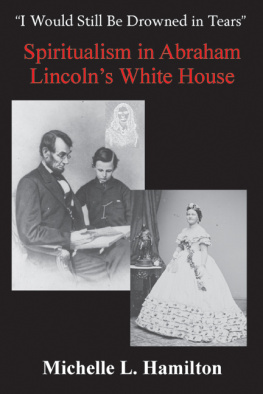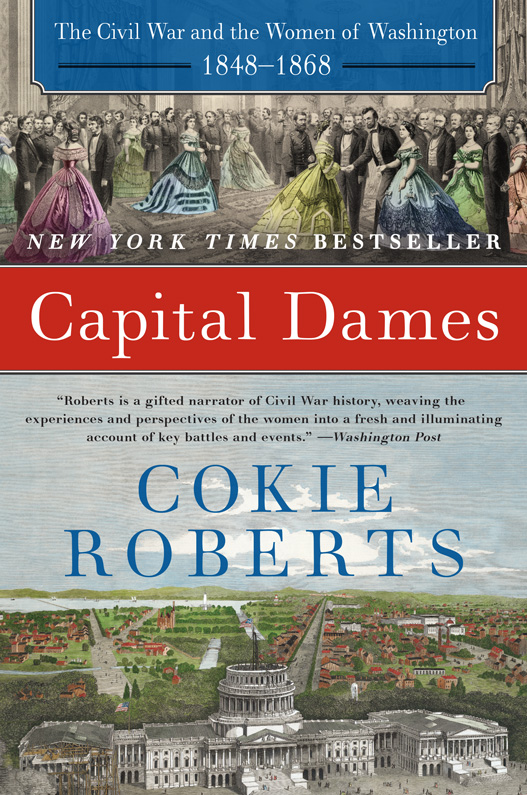my books to them. But I realize that I wouldnt have been able to
seriously first as a girl and then as a woman. So it is those men,
three of whom we lost last year, I thank with this book.
MY FATHER, HALE BOGGS.
MY BROTHER, TOM BOGGS.
MY BROTHER-IN-LAW MARC ROBERTS.
MY BROTHER-IN-LAW PAUL SIGMUND.
AND, MOST ESPECIALLY, MY HUSBAND, STEVEN ROBERTS.
Woman was at least fifty years in advance of the normal position which continued peace... would have assigned her.
CLARA BARTON, MEMORIAL DAY ADDRESS, MAY 30, 1888
The war had torn the whole social fabric like an earthquake.... Women of education and the finest intellectual gifts are to be found in every department.
MARY CLEMMER AMES, T EN Y EARS IN W ASHINGTON , 1873
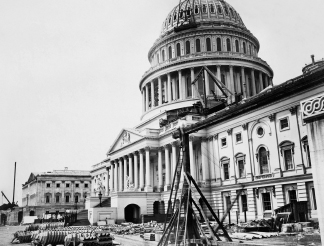
A northeast view of the Capitol still under construction, taken in 1863.
W e all recognize that image of Rosie the Riveter, the symbol of American women who went to work in defense industries during World War II, her head wrapped in a red bandana, her fist thrust upward displaying an impressive bicep with the proud motto: We can do it! And do it they did18 million women workers, comprising one-third of the U.S. labor force, took on all kinds of jobs they had never done before, not just in the munitions and aircraft factories but as shipyard and railroad workers, taxi drivers, newspaper reporters, farmers, scientific researchers, and government girls who poured into Washington to staff the federal agencies. Women found they could do the work, they liked it, and they wanted to keep working, according to a survey taken by the Womens Bureau of the Labor Department as the war ended. And more than sixty thousand women took advantage of the GI Bill to enroll in college.
In short, World War II forever changed the place of women in American societyeven though many went back to their kitchens after the war, the march was on to where we are today, with females making up more than half of our college graduates and almost half of the labor force. If you look at a chart of mothers in the workforce you see a straight progression from the war years on, with only about 14 percent in paid jobs in 1940, compared to almost 70 percent in 2013. The war also spurred women to push for greater equality. The Equal Pay Act, though not passed until 1963, was first introduced in 1945, after the Womens Bureau had lobbied for it. The womens war effort also shamed the Democratic Party into including the ill-fated Equal Rights Amendment in their platform in 1944, four years after the Republican Party had endorsed it.

OVER THE YEARS Ive written a good deal about womens roles in the postWorld War II period. And in researching books about the Revolutionary War era, I learned that women were in the thick of those battles, tookey actors in the creation of the country. So as the commemoration of the sesquicentennial of the Civil War began in 2011, I started wondering whether that horrific conflict had had a similar impact on American womens lives. To get a handle on that question, I decided to concentrate on the world I know best: the political world of Washington, D.C. I wanted to know not only how the war affected the city that sat as a bulls-eye between battling armies, but also what it meant for the women of Washington. And I learned that the answer was, as I suspected, dramatic. The sleepy little prewar Capital City went from being a social center for self-described belles to a place where purposeful women assembled to effect change. And it was not just the city that was transformed; it was also the women themselves. The antebellum belles spent their days calling on Cabinet and congressional wives or listening to debates in the Capitol galleries, and their nights at dinners and dances. Deeply political, they promoted their husbands and fathers careers and competed with each other for preeminent position in the Capital Citys close-knit social circles. Everyone here is well read and well informed, one of the leading belles mothers wrote to her husband on a visit to Washington in 1854. Varina Davis was expecting a new baby and her mother was charmed by the city where her daughter lived: Talent makes the aristocracy heremoney has its admirers toobut talent outranks it. Women of talent could shine in the social gatherings that were dominated by southerners who seemed to have been in Washington forever. Even many of the congressional newcomers and their wives knew each other because their fathers had been there before them. And some of the women had been schoolmates at the Visitation Convent in Georgetown, which educated girls of all faiths and from all regions.
Then secession forced the southern women to depart, and their friends in the city they left behind were soon grappling with questions of safety and sanitation as the capital was transformed first into a huge army camp bursting with frisky fresh soldiers, and then a massive hospital reeking with wounded young warriors. Women engaged in all kinds of activitiesnurses, supply organizers, relief workers, pamphleteers all aided the cause and female journalists covered it. Dorothea Dix and Clara Barton became powerful forces helping the soldiers; Anna Ella Carroll provided the propaganda. And the Civil War boasted its own rendition of Rosie the Riveter, women who did the dangerous work of making munitions at arsenals, many losing their lives in awful accidents. An earlier version of the government girls also were called to the Federal City, women who worked at the Treasury Department taking the place of men who had joined the army just as the agency added the enormous job of printing greenbacks to pay for the war. The Washington Navy Yard broke with tradition as well and hired women to sew canvas bags for gunpowder.

AS ENSLAVED PEOPLE sought refuge behind Union lines and other slaves made their way north, Washington beckoned as the Promised Land for tens of thousands of the so-called contrabands. After emancipation was declared in Washington in 1862 and the numbers of newcomers swelled, African-American women like Elizabeth Keckley joined with their white counterparts to found societies aimed at improving conditions in camps crowded with these displaced persons. And, struggling to establish schools and orphanages to handle the children, many women concluded that changes in public policy were needed in order for any real progress to occur, so they stepped up their lobbying and activism, with suffragists coming to the Capitol to press their case.
The city of Washington would never be the same. The population almost doubled as a result of the war, and the size of the federal government exploded. When I was a little girl the National Mall was marred by ugly temporary buildings that were hastily erected during the two world wars and marked the rapid growth of government over the previous few decades. The Civil War had the same impact. The federal budget, which had been $78 million in 1860, grew to almost $377 million in 1867, after spending for the war had ended. Measures spurring on industrial and agricultural production plus new initiatives like the Homestead Act and the creation of land grant colleges required new federal agencies and an influx of bureaucrats to run them. No longer a small southern town where everyone important knew everyone else, Washington bustled with the energy of parvenus who paraded through the halls of the Capitol and rose in the ranks of Congress.

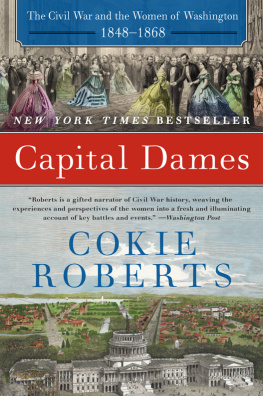



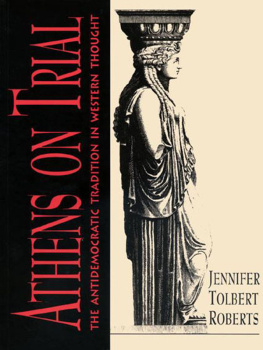


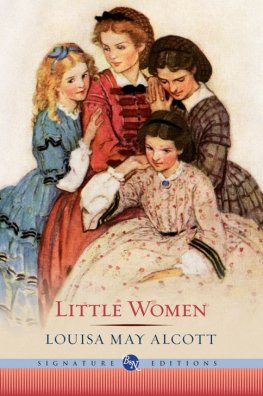
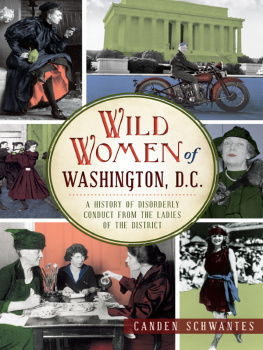
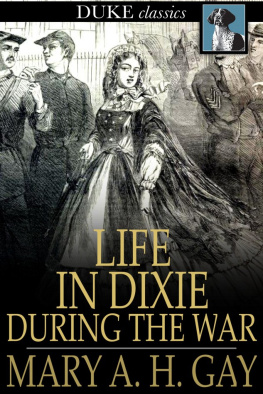

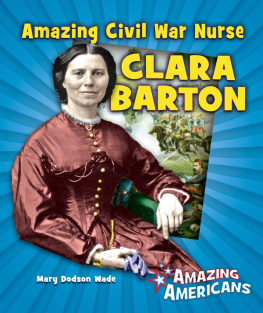
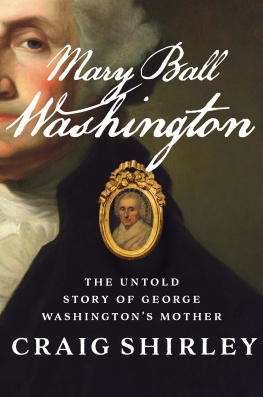
![Alcott - Louisa May Alcott: [a personal biography]](/uploads/posts/book/163779/thumbs/alcott-louisa-may-alcott-a-personal-biography.jpg)
